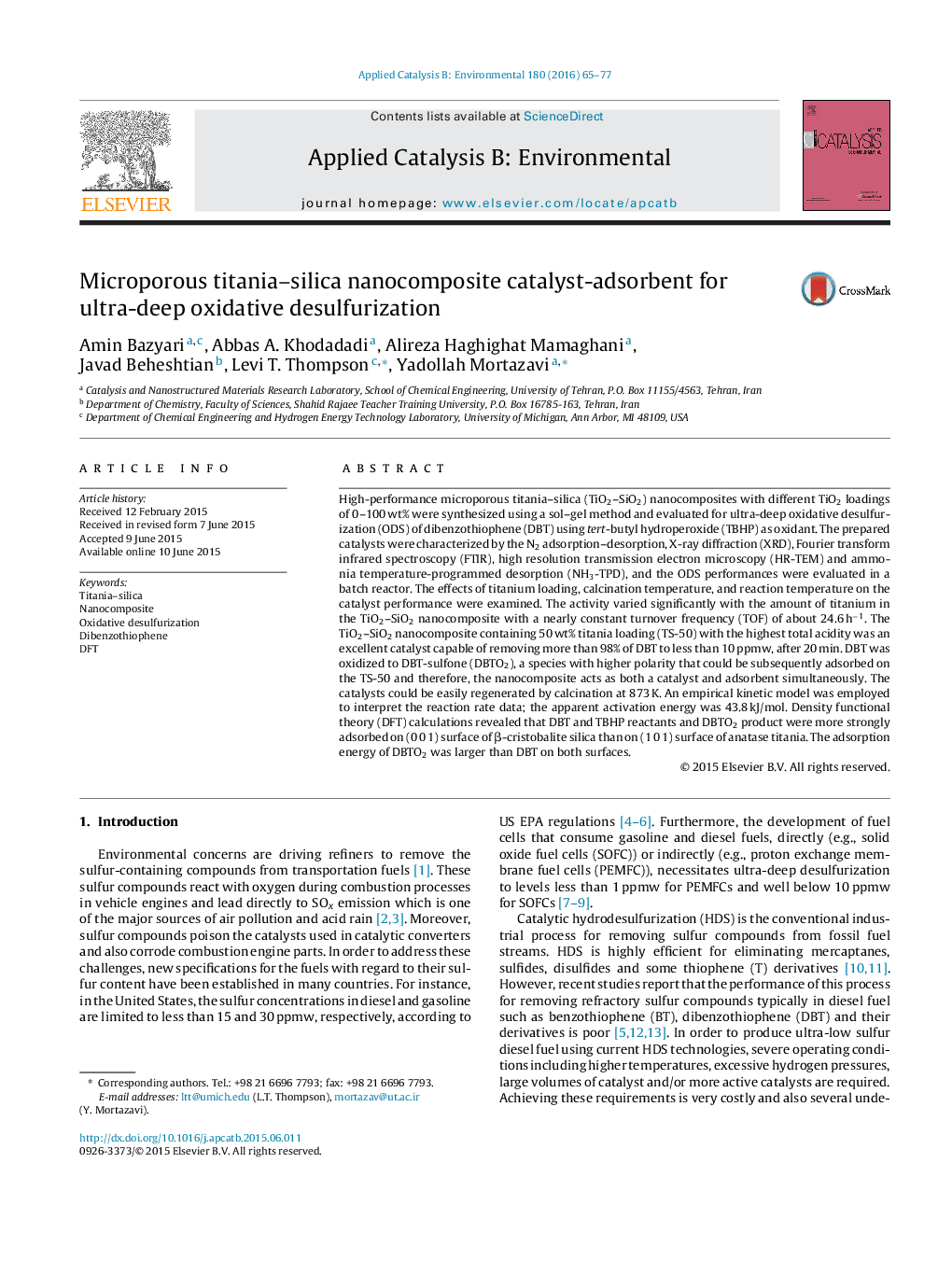| کد مقاله | کد نشریه | سال انتشار | مقاله انگلیسی | نسخه تمام متن |
|---|---|---|---|---|
| 45221 | 46407 | 2016 | 13 صفحه PDF | دانلود رایگان |

• Microporous TiO2–SiO2 nanocomposites were synthesized by sol–gel method.
• Nanocomposite with 50 wt% titania (TS-50) exhibits high performance for ODS of DBT.
• Silica improves dispersion of Ti surface active species and increases total acidity.
• TS-50 has dual function as catalyst and adsorbent for ODS of DBT.
• TiO2–SiO2 nanocomposites are regenerated by high temperature calcination in air.
High-performance microporous titania–silica (TiO2–SiO2) nanocomposites with different TiO2 loadings of 0–100 wt% were synthesized using a sol–gel method and evaluated for ultra-deep oxidative desulfurization (ODS) of dibenzothiophene (DBT) using tert-butyl hydroperoxide (TBHP) as oxidant. The prepared catalysts were characterized by the N2 adsorption–desorption, X-ray diffraction (XRD), Fourier transform infrared spectroscopy (FTIR), high resolution transmission electron microscopy (HR-TEM) and ammonia temperature-programmed desorption (NH3-TPD), and the ODS performances were evaluated in a batch reactor. The effects of titanium loading, calcination temperature, and reaction temperature on the catalyst performance were examined. The activity varied significantly with the amount of titanium in the TiO2–SiO2 nanocomposite with a nearly constant turnover frequency (TOF) of about 24.6 h−1. The TiO2–SiO2 nanocomposite containing 50 wt% titania loading (TS-50) with the highest total acidity was an excellent catalyst capable of removing more than 98% of DBT to less than 10 ppmw, after 20 min. DBT was oxidized to DBT-sulfone (DBTO2), a species with higher polarity that could be subsequently adsorbed on the TS-50 and therefore, the nanocomposite acts as both a catalyst and adsorbent simultaneously. The catalysts could be easily regenerated by calcination at 873 K. An empirical kinetic model was employed to interpret the reaction rate data; the apparent activation energy was 43.8 kJ/mol. Density functional theory (DFT) calculations revealed that DBT and TBHP reactants and DBTO2 product were more strongly adsorbed on (0 0 1) surface of β-cristobalite silica than on (1 0 1) surface of anatase titania. The adsorption energy of DBTO2 was larger than DBT on both surfaces.
Figure optionsDownload as PowerPoint slide
Journal: Applied Catalysis B: Environmental - Volume 180, January 2016, Pages 65–77